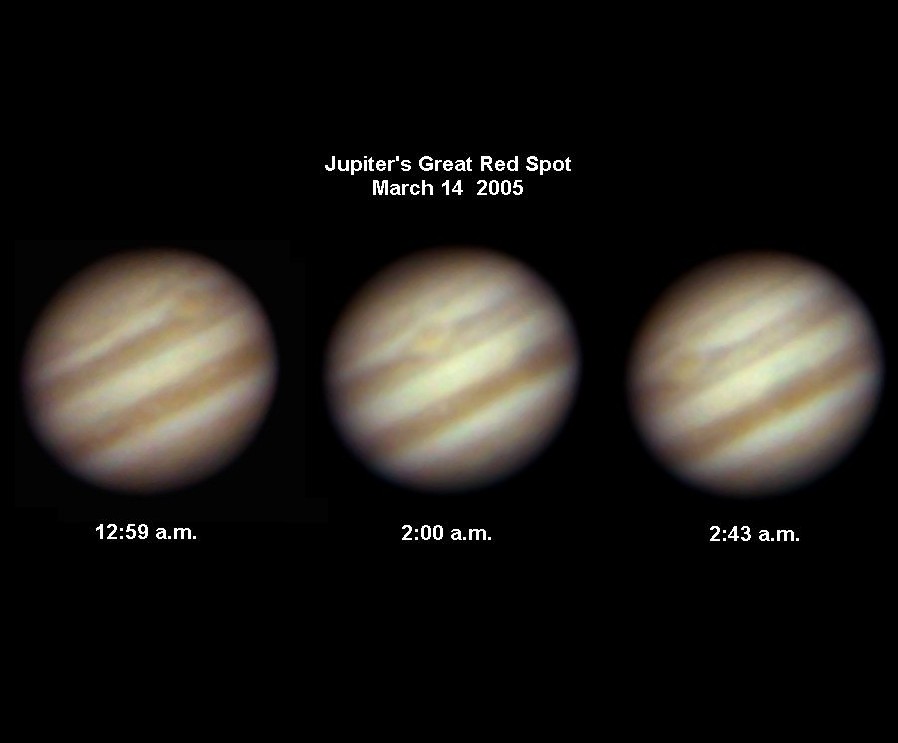
|
|
| Jupiter and its Great Red Spot 3-14-05. Click here for an animation (500kb file) |
|
My most most recent and so far best pictures of Jupiter and Jupiter’s famous “Great Red Spot". In recent decades the GRS has been a much less conspicuous pale tan. The GRS, is a weather pattern similar to our hurricanes, but instead is a high pressure system. It's been churning away at least since it was first observed over 300 years ago. It got its name around 1878 when it turned brick red. Although Jupiter's diameter is 10 times greater than our earth's, and 30 times greater in circumference, it does a complete rotation in only 8 hours. The GRS can't keep up with that kind of speed, and always trails behind by about 2 hours, coming around about every 10 hours. It is also the great difference in speed between the polar and the equatorial regions that create the light and dark cloud bands. Click here for all kinds of interesting info about Jupiter, including a calculator for when Jupiter's Great Red Spot is visible, and the position of it's moons at any day or hour. |
|
8" F10 Schmidt Cassegrain Telescope, 18mm eyepiece, Nikon CP4500 camera at
4x zoom |